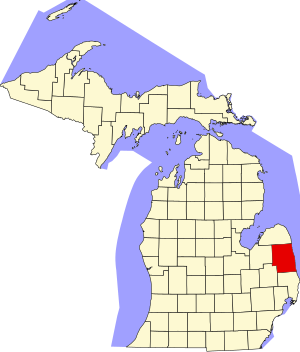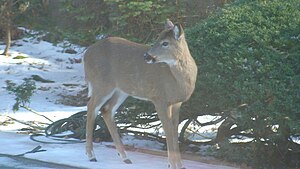Scarce acorns helped deer hunters, while Missouri’s turkey flock
continues to rebound from several years of poor nesting success.
JEFFERSON CITY–Bowhunters posted increases in both deer and turkey harvests during Missouri’s 2012-2013 archery deer and turkey hunting season, topping the previous year’s figures for the second year in a row.
The Missouri Department of Conservation (MDC) reports that hunters checked 53,997 deer during the four-month archery season. That is a 2.5-percent increase from the previous year, which was a record. Archers checked 3,217 turkeys, a 10-percent increase from the previous year.
Top archery deer-harvest counties were Jefferson with 1,211 deer checked, St. Louis with 1,098, and Camden with 1,062. Top archery turkey-harvest counties were Jefferson with 95 turkeys checked, Laclede with 79, and Greene with 76.
Adding the archery harvest to the number of deer taken during the six portions of firearms deer season brings Missouri’s 2012-2013 deer harvest to 311,304, up 6.8 percent from the previous year. The total 2012-2013 turkey harvest, including the youth and regular spring seasons, the fall firearms season, and the archery season, is 56,511.
Permit sales also increased. MDC issued 202,421 archery deer and turkey hunting permits for the 2012-2013 season, 4.9 percent more than the previous year.
MDC Resource Scientist Jason Sumners says the continued growth of bowhunting’s popularity is partly responsible for the strong archery harvest, but weather also played an important role.
“With more people taking up bowhunting each year, you would expect to see a corresponding growth in the number of deer taken,” says Sumners. “This year hunters also got a boost from weather events that reduced the availability of acorns. Deer rely heavily on acorns for fall food, and when that food item is scarce they have to move around more to meet their nutritional needs. That makes them more visible to hunters.”
According to Sumners, acorn availability is a greater factor in determining hunter success in the southern half of the state, where forest land dominates the landscape. So he was not surprised to learn that the 2012-2013 deer harvest increased by approximately 22 percent in the Ozark and Southeast regions. He says deer numbers in southern Missouri have grown steadily over the past decade. Also, acorns were abundant in the previous two hunting seasons, keeping the deer harvest fairly modest. This combination was bound to produce a substantial deer harvest.
In contrast, deer numbers have been declining slowly in northern Missouri, leading to a decrease of approximately 6 percent in the Kansas City, Northeast, and Northwest regions. Reduced deer numbers in many parts of north Missouri is a result of increased harvest pressure on does that has resulted from liberalization of antlerless harvest opportunities and, in the Kansas City Region, a reduction in buck harvest as a result of the antler-point restriction.
Hunters in the Central and Southwest regions checked approximately 12 percent more deer, and St. Louis Region hunters checked approximately 18 percent more deer than they did in 2011-2012. These trends reflect slowly increasing deer numbers on average in these areas.
“Deer numbers vary from county to county in those regions,” says Sumners. “The causes of those variations include varying levels of harvest pressure on does, an outbreak of hemorrhagic disease in 2007 and, in southwest Missouri, reduced availability of antlerless permits.”
Before the 2012-2013 hunting season, Sumners predicted that the statewide deer harvest totals would not be affected significantly by the increased incidence of hemorrhagic disease that accompanied last year’s drought. That turned out to be correct.
“We know that to varying degrees, hemorrhagic mortality affected deer populations across much of Missouri,” says Sumners, “but it is still too early to tell if the decrease in harvest in some areas is the direct result of disease or a combination of recent trends of declining deer numbers as a result of a deliberate effort to reduce deer numbers in much of northern Missouri by harvesting more does. In many parts of central, northern, and western Missouri it is no longer necessary to continue high doe harvest to reduce or stabilize deer numbers.”
Sumners says MDC will consider reducing the availability of antlerless-deer permits where deer numbers seem to be near or below target levels. However, he notes that hunters and landowners also must take an active role in decisions about how many does to shoot.
“Restricting doe harvest can help when deer numbers are down in big areas,” says Sumners, “but it takes a valuable tool away from Missourians who want to manage deer populations locally. We have reached a point in Missouri’s history where hunters and landowners must begin to work together to make localized harvest decisions based on local deer populations. However, in some areas regulation changes may be necessary to curb undesirable declines in deer numbers. ”
MDC Resource Scientist Jason Isabelle notes that the 2012-2013 archery turkey harvest was up more than 20 percent from the previous five-year average and was second only to the 2009-2010 harvest of 3,298.
“The increase in the archery turkey harvest is largely a reflection of the improved hatches we’ve had the past couple years,” says Isabelle, “in addition to the increase in the number of archery hunters.”
Isabelle says regional harvest totals were 542 in the southwest, 511 in central Missouri, 425 in the Southeast, 418 in the Ozarks, 383 in the St. Louis area, 319 in the northwest, 318 in the northeast, and 301 in the Kansas City area.
MDC recorded 10 firearms-related deer-hunting incidents during the 2012-2013 hunting season. Three were fatal.












